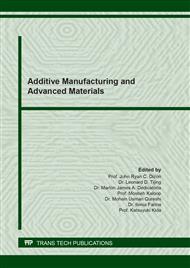p.181
p.195
p.205
p.215
p.227
p.241
p.247
p.259
p.265
Utilization of Fine Soil as Potential Source for Core of Rock-Fill Dam
Abstract:
This study investigates the use of wadi sediments as a potential source for the core of rock-fill dams. The current practice utilizes clay and silty materials for the core of the rock-fill dam. In Oman, clay is not abundantly available, so there is a need to propose a local alternative material as a potential source for the core of the rock-fill dam. Dredged sediment is believed to have properties like clay but is a waste material deposited in reservoirs. The samples of wadi sediments were grouped from the reservoir of Wadi Jizzi Dam, located a few kilometers away from the city of Sohar. A detailed laboratory-testing program investigates the physical characteristics, grain size distribution, liquid and plastic limits, specific gravity, compaction, hydraulic conductivity (permeability), swelling potential, and unconfined compressive strength. All the tests were performed following the British Standard. The pure dredged sediment has a hydraulic conductivity of 7.11x10-6 cm/s, which is comparable to the requirements of the core of the dam. To improve the other properties of the dredged sediment, it is mixed in different proportions with dune sand collected from the Al-Sharqia Desert of Oman. The test results suggest that a mixture ratio of 50% of sediment to the dune sand gives optimal strength, durability, and permeability. On the other hand, for the comparison purposes, bentonite was mixed with sand by various percentage. The microscopic investigation and X-ray diffraction (XRD) analysis tests on dredged sediments suggest that the material can be utilized without causing any environmental concerns. The outcomes of this study is expected to assist the practitioners in achieving cost-effectiveness and sustainability in the design.
Info:
Periodical:
Pages:
227-238
Citation:
Online since:
March 2022
Authors:
Keywords:
Price:
Сopyright:
© 2022 Trans Tech Publications Ltd. All Rights Reserved
Share:
Citation:


